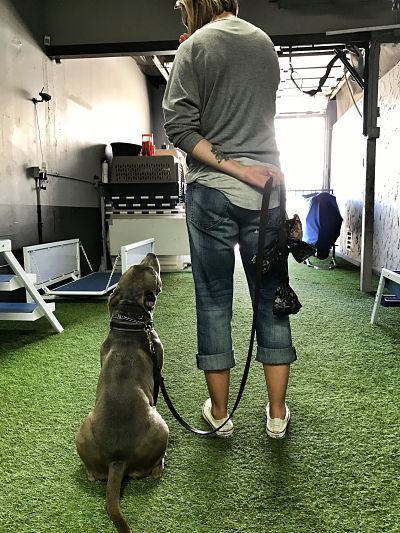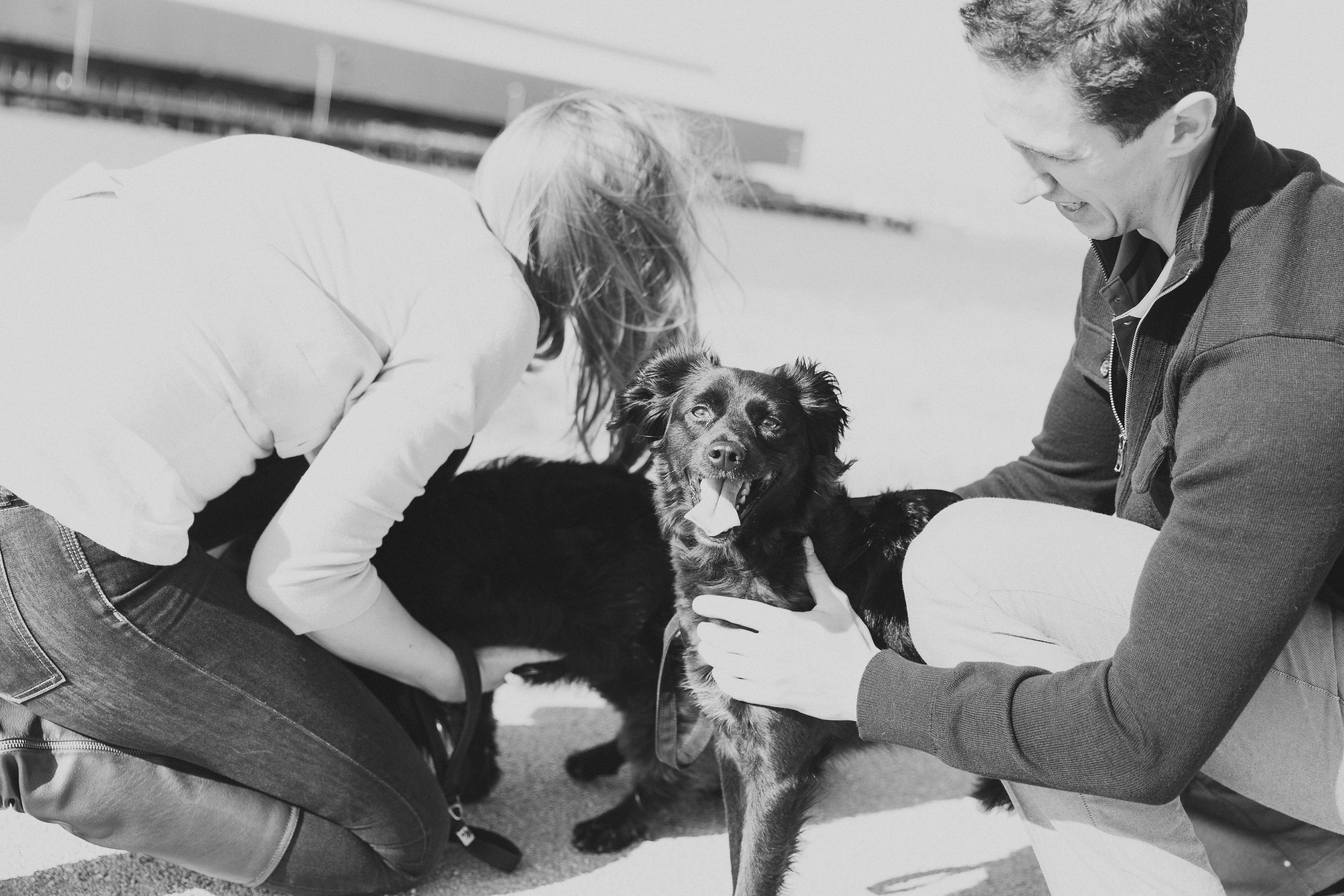Luring is done when you use a reward, most often food, to help shape the dog into a desired position. For example, teaching a dog to sit, you lure the food above their head in order to get them to put their back end on the ground. This is very often what you will see done when teaching a new dog behaviors, because it is very efficient to lure into position to shape a behavior and then reward once it is given to increase frequency. Dogs who are food motivated are working in drive when being lured for training, and as such, you can quickly begin to get behaviors offered. It sounds perfect, right? The difficulty in using luring is being able to wean off the lure (“my dog only lays down when I bring a treat to the ground”) which can often take some time as some dogs become very reliant on a lure.
Free shaping still uses positive reinforcement, but instead of using the food to shape the behavior, you simply wait for the dog to offer motions towards the behavior you are seeking, mark with a clicker or marker word, and reinforce. This can be very helpful in accomplishing complex behaviors as you can shape by reinforcing in steps towards the final desired behavior. I find that free shaping can often help a dog use more problem solving skills in learning, which is a great skill in advanced training. The challenge with free shaping becomes how efficiently the trainer can time and mark the behaviors so it is very clear for the dog what the expectation is, and what is getting them paid.
“….it is very clear for the dog what the expectation is, and what is getting them paid.”
These techniques are best utilized for a dog that already has a reward system in play and has a marker word or clicker loaded for reinforcement. There is never any one right way to get a dog to offer a behavior, so get creative in your training, and always remember that your timing and consistency is key in your ability to communicate expectations to your dog!

Have you tried different training techniques? Share them below!
